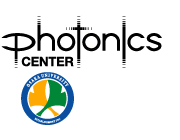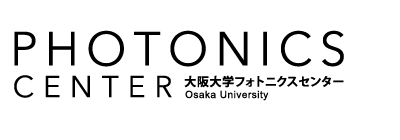【研究成果】2013年
研究成果58
Saturation and reverse saturation of scattering in a single plasmonic nanoparticle
Shi-Wei Chu, Hsueh-Yu Wu, Yen-Ta Huang, Tung-Yu Su, Hsuan Lee, Yasuo Yonemaru, Masahito Yamanaka, Ryosuke Oketani, Satoshi Kawata, Satoru Shoji, and Katsumasa Fujita
ACS Photonics, Article ASAP (2013)
Nonlinear optical interaction is crucial to all optical signal processing. In metallic nanostructures, both linear and nonlinear optical interactions can be greatly enhanced by surface plasmon resonance (SPR). In the last few decades, saturation and reverse saturation of absorption in plasmonic materials have been unraveled. It is known that scattering is one of the fundamental light−matter interactions and is particularly strong in metallic nanoparticles due to SPR. However, previous methods measure response from ensemble of nanoparticles and did not characterize scattering on a single particle basis. Here we report that backscattering from an isolated gold nanoparticle exhibits not only saturation, but also reverse saturation. Wavelength-dependent and intensity dependent studies reveal that nonlinear scattering is dominated by SPR and shares a similar physical origin with nonlinear absorption. The reversibility and repeatability of saturable scattering (SS) and reverse saturable scattering (RSS) are validated via repetitive excitation on the same set of particles. Compared to fluorescence, our novel discovery of single-particle-based SS and RSS does not suffer from bleaching and can be used as a more robust contrast agent for optical microscopy. Under a reflection confocal microscope, interesting point-spread functions are observed, with full-width-of-half-maximum of central and side lobes reduced to λ/5 andλ/13, showing great potential for super resolution microscopy.




